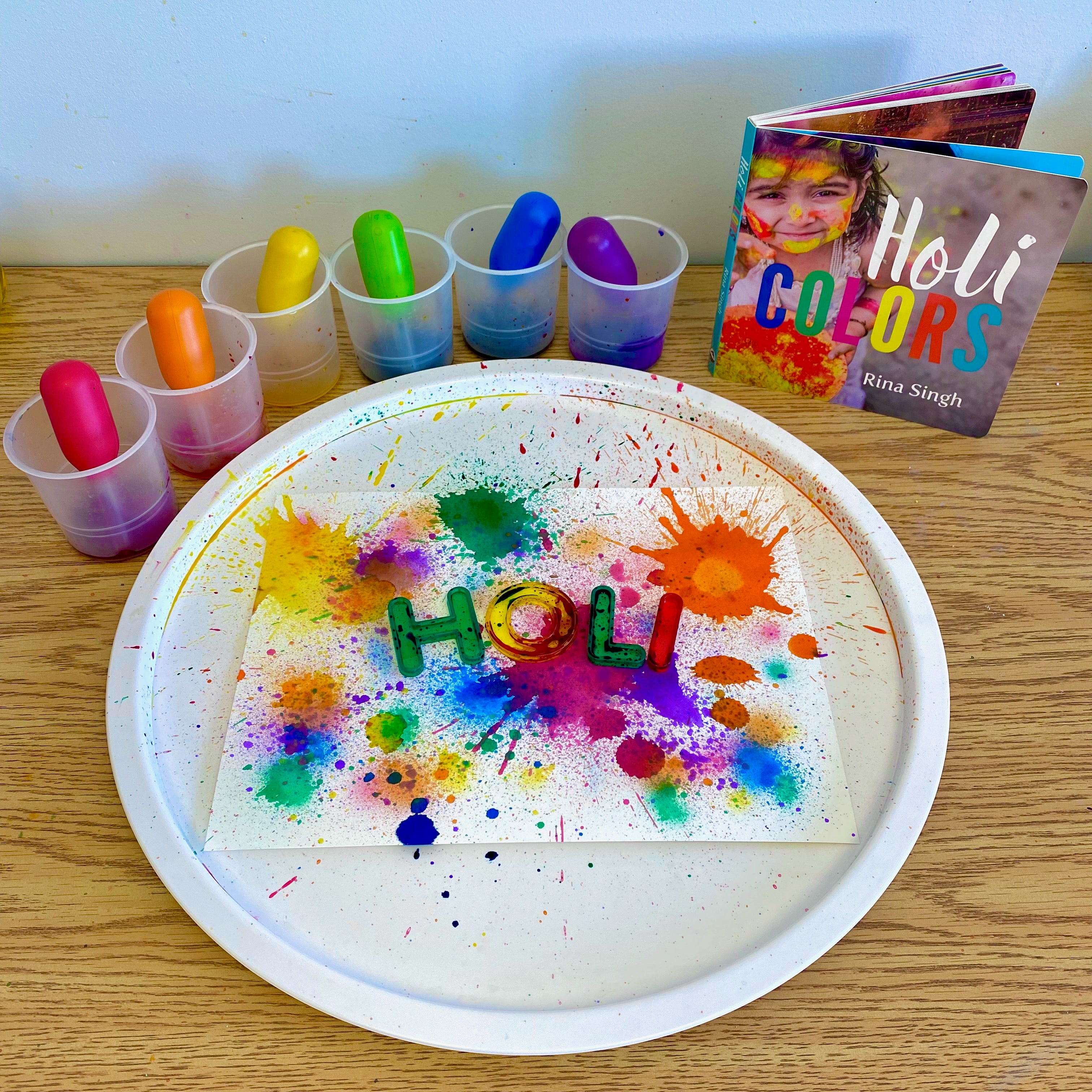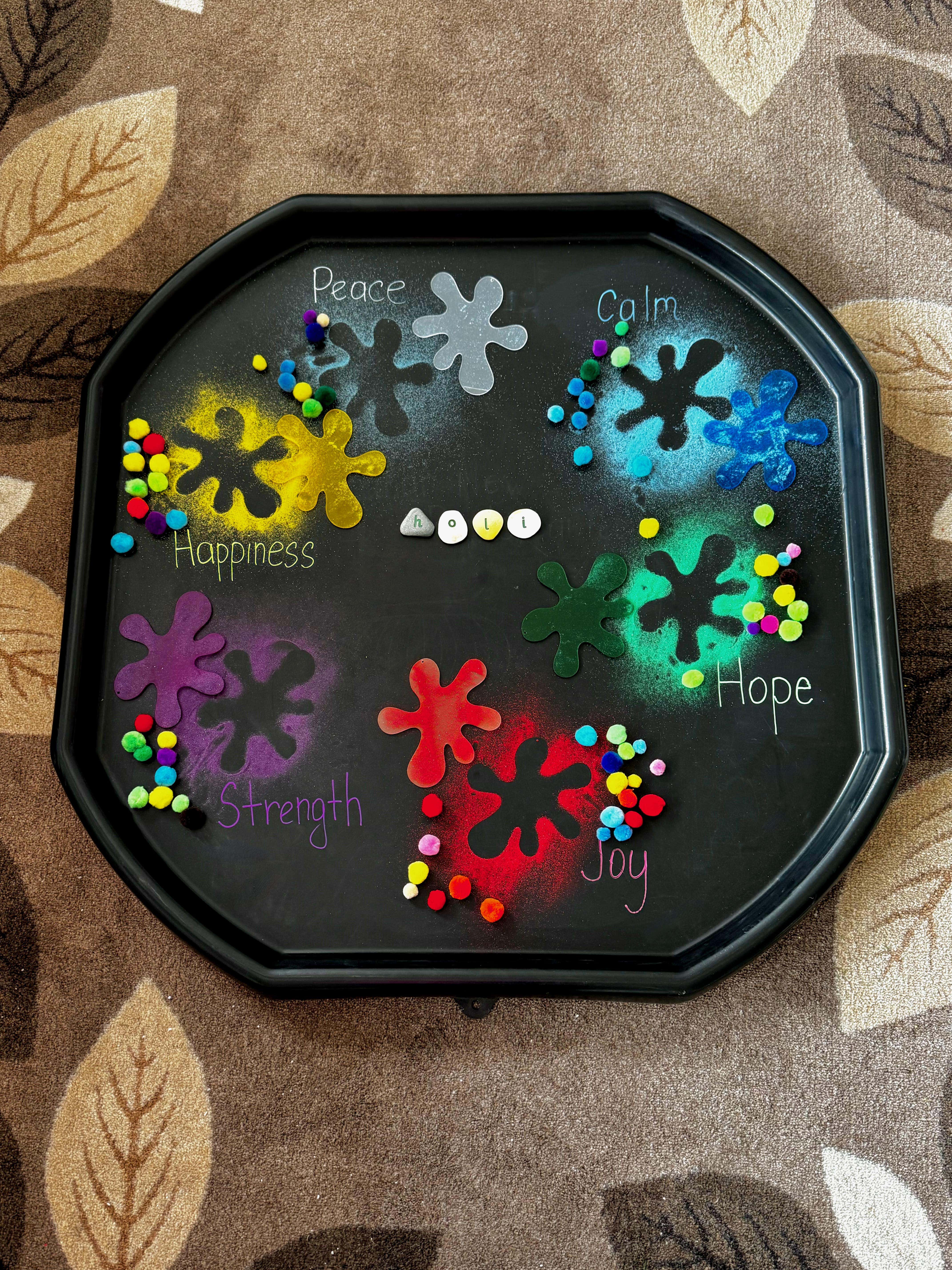

Bringing Colour to Learning: Celebrating Holi in Early Childhood Education
Holi, the festival of colours, is one of the most vibrant and joyous celebrations in the world. Rooted in Indian culture and Hindu traditions, Holi is a time of unity, renewal, and joy, making it a beautiful celebration to introduce to young children. By learning about and participating in Holi, children develop a deeper understanding of diversity, inclusion, and cultural appreciation.
Whether you're a parent, grandparent, or educator, incorporating Holi into early childhood learning through play-based activities fosters curiosity, creativity, and social-emotional development. Let’s explore what Holi is, why it’s celebrated, and how you can bring this colourful festival into your child’s learning experiences!
What is Holi?
Holi is a Hindu festival celebrated mainly in India and Nepal, but its joyous spirit has spread across the world. It typically falls in March, marking the arrival of spring and the triumph of good over evil.
Holi celebrations begin the night before with a bonfire symbolizing the burning away of negativity, followed by a day filled with laughter, music, dance, and the famous throwing of coloured powders! People of all ages take part, making it an ideal festival for young children to experience joyful, sensory-rich learning.
The Importance of Colours in Holi
The highlight of Holi is the playful throwing of brightly coloured powders (gulal), each with symbolic meaning:
Red – Represents love and fertility
Yellow – Symbolizes happiness and knowledge
Green – Stands for new beginnings and nature
Blue – Signifies calmness and the divine
Purple – Represents mystery and magic
For children, exploring these colours offers sensory stimulation, fosters early learning about symbolism, and strengthens fine motor skills as they engage in colour-based activities.
Holi Pipette Painting
Today is Holi also known as the Festival of Colours, Festival of Spring, and Festival of Love, is one of the most popular and significant festivals in Hinduism.
Holi is called "The Festival of Color", with the main rituals being throwing and applying of colored water and powders to friends and family. People use the color flights to celebrate happiness and love, which were immortalized in the legend of the divine love between Krishna and Radha. This easy process art activity allows children to explore this practice with paint.
Red — Color of urity, Love, Passion, and Fertility
Orange or Saffron — Color of Courage and Sacrifice
Yellow — Color of Happiness, Meditation, and Peace
Green — Color of Nature, Spring, and New Beginnings
Blue — Color of Calm and Otherworldliness (Krishna's Skin Color)
Pink — Color of Youth, Good Health, and Playfulness
Purple — Color of Supreme Peace and Wisdom




Holi Colours Sensory Invitation
Holi Colour Friends
Let’s celebrate Holi but creating our colour friends with colour powder to symbolize the festival! Holi is a popular ancient Hindu festival, also known as the “Festival of Spring, Colours & Love”
To celebrate, a free-for-all festival of colours, where people smear each other with colours and drench each other. Water guns and water-filled balloons are also used to play and colour each other.
Fill your PlayTray with shallow water! In the compartments scrape coloured chalk to act as your Holi powder! Then cut out people from watercolour paper!
Sprinkle your chalk over the water and then dip your person in and reveal their colours!
How to Observe Holi at Home or in the Classroom
You don’t have to throw powders to experience the joy of Holi! Here are inclusive ways to celebrate:
✔ Create a Holi-Themed Play Station – Set up sensory bins with coloured sand, pom-poms, and paint.
✔ Make Holi-Inspired Snacks – Try rainbow fruit skewers or colourful yogurt swirls.
✔ Practice Kindness – Encourage children to share their favourite colours with friends and make colourful friendship bracelets.
✔ Watch a Holi Celebration – Show child-friendly videos of Holi festivals to bring the celebration to life.
Why Teaching Holi Matters
Celebrating Holi introduces children to:
-Diversity & Inclusion – Learning about different cultures promotes respect and appreciation.
- Sensory Play & Creativity – Exploring colours and textures supports fine motor development.
- STEM Learning – Colour mixing, seasonal changes, and sensory experiments encourage scientific thinking.
- Social-Emotional Growth – Holi teaches children about kindness, renewal, and togetherness.
By embracing Holi through play-based learning, we foster curious, compassionate, and culturally aware learners. Let’s bring the festival of colours into early childhood education and celebrate the beauty of diversity!

